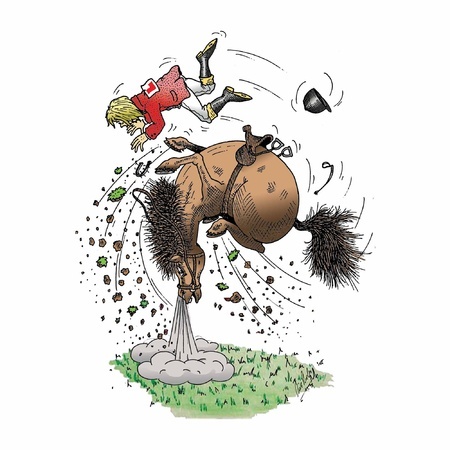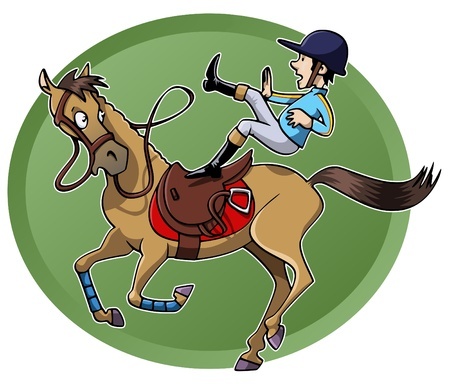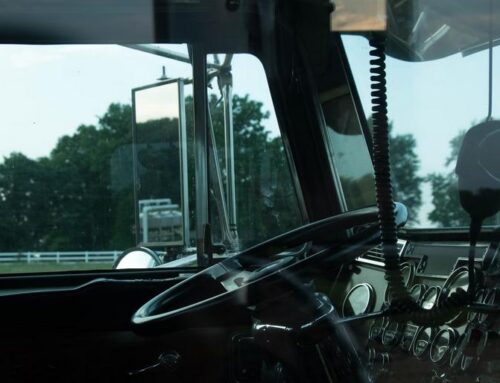By: William W. Hurst, Indiana Attorney
We often get inquiries from people who have sustained severe injuries while riding, showing, or otherwise participating in horse related activities. As this article will reveal, making a claim for an injury sustained while riding a horse can be a complex matter because of the Indiana Equine Activity Statutes. This article will focus heavily on horse shows, but the same liability concepts are applicable to other situations. Horse shows, as wells as State and County fairs, where horses are being shown, occur weekly in the Spring and Summer in Indiana.
Prior to participation, riders are usually asked to sign waivers and liability releases which purport to excuse the owner or sponsor of the show from liability for injuries which occur during the event or activity. There are exceptions to these releases so one should not assume that just because he/she signed a release that the claim for injuries will be “barred”. Additionally, Indiana like many other states has Equine Activity Statutes which gives immunity to sponsors and equine professionals which is usually a serious road block for injured equestrians. So, who do you sue, or can you sue if you are injured as a result of showing your horse at the county fair?
What About The Enforceability Of A Liability Release?
As mentioned, participants in equestrian events are required have to sign a release and be aware of warnings posted at various locations where show is held or at the boarding stable. As a result of signing a release the participant in a show assumes the risk of injury caused by engaging in the activity.
A release has the effect of barring a claim against the other party (event sponsor) even for an injury which was not caused by the released party’s negligence. Some courts have even upheld releases for injuries caused by negligence of the sponsor or stable owners if the release is specific and explicit to the negligence released.1 Releases (or exculpatory clauses) are valid contracts and will normally be upheld as barring a claim.2
The Indiana Equine Activity statute adds another requirement for liability releases to be valid, stating that it must contain the language laid out in Indiana Code section 34-31-5, which is, “Under Indiana law, an equine professional is not liable for an injury to, or death of, a participant in equine activities.”3
There are situations in which a liability release will not be enforced by a court. If the party being sued cannot produce a copy of the signed release they will not be able to rely on the release. If the person who signed the release is a minor (person under the age of 18) then the release will probably not be enforced. Since a release is a contract and contracts signed by minors are, generally speaking unenforceable against the minor. If a parent signs the release, in such a case the parents are only signing away their parental right to sue not the minor’s. Specifically in equine cases, courts have determined that parents cannot release liability on behalf of their child.4 Further, even if a release is determined to be valid, if the conduct by the party released from liability has been grossly negligent, willful, or has intentionally done something which caused the injury, then the claim is not barred. The principal behind a release is that a person acknowledges the assumption of risk this riding entails, but no person assumes the risk of intentional, willful, or wanton misconduct of another party.
What about the immunity created by Indiana Equine Activity Statutes?
The Indiana Equine Activity Statutes limit liability for injuries and deaths connected with horse related activities. Generally, any equine activity sponsor or professional is not liable for injuries or deaths resulting from risks inherent to equine activities.5 This Statute bars a participant6 from filing suit against an equine activity sponsor, which includes anyone who sponsors, organizes, or provides facilities for an equine event7, or equine professional, such as a horse trainer, for any injury resulting from the inherent risk of equine activities.
What are these “inherent risks of equine activity” the Statute makes reference to?
Inherent risks of equine activities, according to the Statute include; the tendency for horses to behave in dangerous ways, the unpredictability of how horses will react to sudden sounds or objects (including other animals), surface conditions, collisions with other animals, and the potential of another participant to act negligently or failing to maintain control over their animal.8
Indiana courts have also identified a few things that fall under the “inherent risk” category. For example, being trampled by a horse that was startled by a cars reverse alarm is considered an “inherent risk”.9 Being kicked by an agitated horse was also found to be an “inherent risk”.10 On the contrary, one court determined that an out of control, screaming girl spooking a horse, which then spooked another horse that bucked its rider off and injured the rider, was not an “inherent risk” of equine activity stating “there is no provision granting immunity for the negligence of defendant’s wranglers in failing to protect the participants from an obvious danger of which they have ample notice.”11
What is a circumstance which would not be considered an “inherent risk” or a risk which provides the sponsor immunity from liability? One such circumstance I find in these cases is some dangerous activity which is occurring at or near the show that the sponsor should and could have prevented, but failed to do so.
What Other Requirements Are There to Create Immunity?
In order to claim immunity from these “inherent risks” under the stature the sponsor of the show must have at least one sign posted on the grounds or in the building which states, “Under Indiana Law, an equine professional is not liable for an injury to, or death of, a participant in equine activities resulting from the inherent risks of equine activities,”12 in one inch (minimum height), black letters.13 This same language must be clearly stated in written contracts for immunity to be claimed if a written contract exists.14
So, for the most part the Indiana Equine Activity Statutes grant immunity to activity sponsors and professionals and puts the assumption of risk regularly associated with equine activities on the participant. As with any law, however, there are exceptions to the general rule.
Exceptions?
What are the exceptions? Well, there are a few.15 First, this Statute does not apply to horse racing. Second, if the sponsor of the show provides the participant with faulty equipment and they knew or should have known the equipment was faulty, then they can be held liable if the faulty equipment was the cause of the injury. Third, if the sponsor provided the horse and failed to, based on the participant’s representation of their own ability ensure that the participant can both safely engage in the activity and manage the particular horse and this is the proximate cause of the injury then the sponsor may be liable. Fourth, if the person possesses the land or facilities and knew or should have known of a latent defect which caused the injury (and there were no signs posted in clear view on the land or facilities) the sponsor may be held liable. Lastly, if the sponsor acted with a reckless disregard for the safety of the participant resulting in the injury or intentionally injured the participant, then they may be liable. Gross negligence is the conscious or voluntary disregard of the need to use reasonable care which is likely to cause foreseeable grave injury or harm to a person or property, or both. Thus, if the sponsor acts in a reckless manner causing injury to the rider, the liability release the rider signed may not be enforceable.
The Equine Activity statutes shift the assumption of risk, for “inherent risks of equine activities,” from the activity sponsor, or group or person putting on the event, to the participants. This means participants in equine activities assume certain foreseeable risks such as being thrown, kicked, bit, stepped on, and other normal risks involved when dealing with horses. The Indiana Equine Activity statute does not bar a common law negligence claim where the injury was not a result of the “inherent risks of equine activity.”
Citations:
1 Anderson v. Four Seasons Equestrian Center, Inc., 852 N.E.2d 576, 581 (Ind. Ct. App. 2006)
2 Id.
3 Indiana Code § 34-31-5-4 (1998)
4Hawkins ex rel. Hawkins v. Peart, 2001 UT 94, 37 P.3d 1062 (Utah 2001)
5 Indiana Code § 34-31-5-1 (1998)
6 Indiana Code § 34-6-2-95 (1998)
7 Indiana Code § 34-6-2-42 (1998)
8 Indiana Code § 34-6-2-69 (1998)
9 Einhorn v. Johnson, 996 N.E.2d 823 (Ind. Ct. App. 2013)
10 Perry v. Whitley County 4-H Clubs, Inc., 931 N.E.2d 933 (Ind. Ct. App. 2010)
11 Fielder v. Academy Rising Stables, 49 P.3d 349 (Colo. App. 2002)
12 Indiana Code § 34-31-5-5 (1998)
13 Indiana Code § 34-31-5-3 (1998)
14 Indiana Code § 34-31-5-4 (1998)
15 Indiana Code § 34-31-5-2 (1998)






